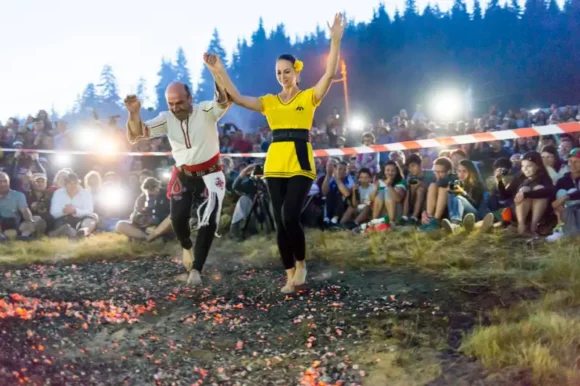Reading Dimitris Xygalatas’s Ritual for New Scientist, 1 June 2022
“I always feel my stomach churn when I look at someone being impaled by a spear through the cheeks,” writes Dimitris Xygalatas, a Connecticut anthropologist specialising in the study of extreme rituals. The Thaipusam Kavadi ritual in Mauritius is his favourite (if that is quite the word): men endure many piercings, ranging from a few needles through the cheeks to several hundred spikes perforating the entire body, “as well as hooks from which they hang bells or limes”.
It’s a florid affair, but by no means exceptional. From the hazing ordeals of US college fraternities to the arduous initiations practised in criminal gangs and military groups around the world, ritual is everywhere. “If you can find a human society without any rituals,” writes Xygalatas, “I will happily reimburse you the cost of this book.”
Why rituals exist is a puzzle. Ask a young man from Greece, Bulgaria or Spain why he walks over burning coals every year, and he is most likely to shrug and say he’s doing as his father and grandfather did. Further explanations are more subtle and full of symbolism, but no more revealing. The Thaipusam Kavadi ritual is said to commemorate the occasion when Murugan received his mighty spear from his mother, enabling him to lead a divine army against the demons, led by the demon Soorapadman, who had kidnapped the gods. So there.
But what if those baroque just-so stories were explanations after the event — genuine attempts to rationalise behaviours more ancient than any tale — more ancient, indeed, than reason itself?
Not every ritual performer in this book is human. Magpies, crows and ravens perform death rites. So do elephants and dolphins. Chimpanzees build cairns and visit what we might dare to call sacred trees; at any rate, these regular tree-visits are an occasion for dancing and feverish excitement. The pattern is not hard to spot: the more social a species is, the more ritualistic it is.
Suppose ritual behaviour evolved very early, especially in avian and mammalian lines; then it shouldn’t be too hard to spot what’s advantageous about this adaptation. Perhaps ritual is the primary mechanism by which we develop theory of mind and establish group identity. More specifically, social beings become anxious in the absence of their fellows. Grief, though maladaptive, is simply a special case of the anxiety that bind social groups together. That being the case, death rituals might exist to ameliorate the anxiety triggered by bereavement.
Xygalatas has spent 20 years putting bones on these ideas. His is now a hybrid field. Biometric sensors and hormonal sampling are used to explore the neuro-physiological effects of various rituals; while more traditional ethnographic methods, including behavioural measurements, psychometric tests and surveys, reveal some of the motivations behind ritual practices.
The results are not altogether convincing. The work is solid enough, but Xygalatas couches his conclusions in terms of how healthful ritual practices can be. We’ve known for a while that intense physical exercise can be as effective as antidepressant medication — or would be, if you could only get your demotivated, mood-disordered client out of bed in the morning. “Cultural rituals may help circumvent this problem by exerting external pressure to participate,” says Xygalatas. This does not feel to me like a compelling reason to go walking over hot coals.
Xygalatas can hardly be blamed for wanting to put the most positive spin he can on this fascinating and rapidly developing field of study.
Even as I was reading this book, however, news came that Russian kindergarten children were dressing up as tanks and nuclear missiles, in time for Russia’s 8 May Victory Day parade.
Xygalatas’s always fascinating account begs a sequel, about how ritual so often proves maladaptive among hypersocial Homo sapiens.

